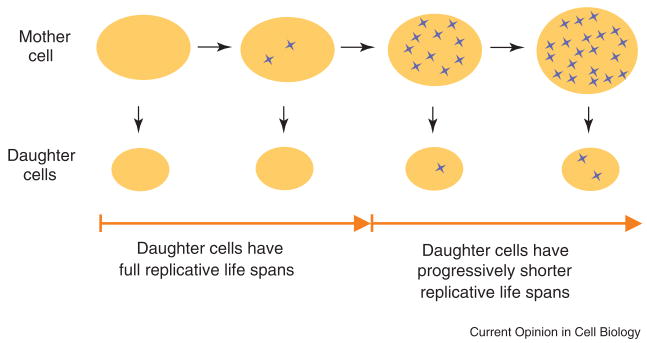Figure. Model for the Molecular Basis of Replicative Age-Asymmetry.
A single yeast mother cell (top) undergoes replicative aging as she produces successive smaller daughter cells (below the mother cell). One or more senescence factors accumulate in the mother cell (blue Xs) and cause senescence or an age-associated phenotype once a critical threshold is reached. The senescence factor(s) is asymmetrically distributed between the mother cell and the daughter cells for most of the mother cell life span. Likewise, for most of the mother cell’s life span, replicative aging is asymmetric. Daughter cells do not inherit their mother’s age – the replicative age of the daughter cells is “reset” to zero. In the last half of a mother cell’s life span, there may be a complete breakdown of senescence factor asymmetry. Alternatively, senescence factor asymmetry could still exist but so much senescence factor may have accumulated in the mother cell that even the small proportion of the mother cell’s senescence factor acquired by the daughter cell has a deleterious affect on replicative life span. Once daughter cells start to acquire sufficient levels of senescence factor, they are born with progressively decreasing replicative life spans.

